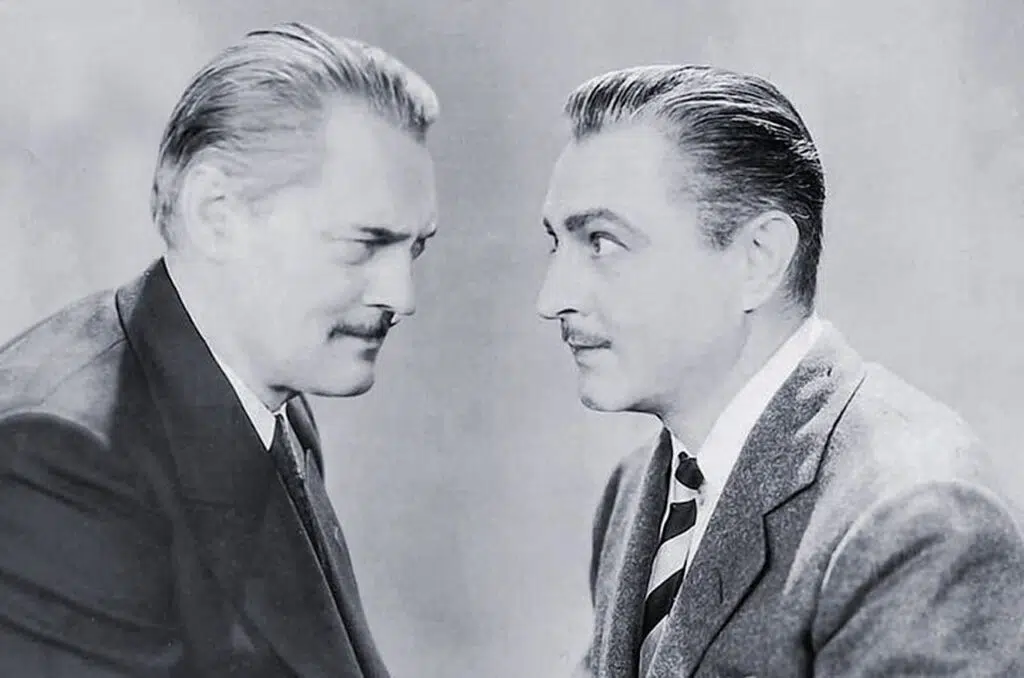1932’s Arsène Lupin wasn’t the first movie about the gentleman thief by a long stretch but it is one of the best, thanks to canny casting and a pace that never slackens.
The canny casting comes in the shape of the Barrymore brothers, Lionel and John, on screen together in starring roles for the first time – the publicity machine made much of it. Older sibling Lionel gets the best of it as the huffing, irascible cop Guerchard, while John (aka “The Great Profile”) does more matinee idol stuff as the Duke of Charmerace, womanising noble lord by day, thief by night, and a thief, what’s more, who likes to announce to the cops what he’s going to pilfer in advance. Here’s a man who loves his work.
Starting as it means to go on, the action opens up with a lightning-fast set-up in mid-scene – a man is tied up on the floor, a burglary has already been committed and the perp, presumed to be Lupin, has escaped, leaving behind a series of clues that point to his true identity, all part of an elaborate gag set up by Lupin himself, who specialises in getting himself into and then out of impossible situations.
The plot is a simple one and has a Robin Hood aspect – a crusty member of the aristocracy has a large amount of jewellery and bonds that are just aching to be liberated, and since he came into much of the wealth as a result of shady dealing during the Great War, he is fair game. Lupin announces he’s going to do it. The cop is certain that Charmerace is Lupin – the Duke’s smirk when Guerchard tries and fails to arrest him is proof enough! – and so sets a thief to catch a thief, recruiting a swindler, Sonia (Karen Morley), to pose as a Russian emigrée. A classic honeytrap that hasn’t reckoned on one thing – she is going to fall for the Duke, just as he is about to commit his boldest robbery yet, the lifting of the Mona Lisa in broad daylight right in front of the eyes of the police.
Lupin was created by Maurice Leblanc and first appeared in short stories written in 1905. He was meant to be something like a French Sherlock Holmes – brilliant, unconventional but crooked – and was already a screen staple by this point. The first film of his adventures dates to 1908 and he continued to be popular on big and small screens right through the 20th century, the pace slackening a bit from the 1980s (as it did for Sherlock Holmes) before picking up speed again with the hugely popular 2021 Netflix series Lupin, in which Omar Sy plays the canny crook (interestingly, Sherlock Holmes has also had a 21st century revival).
If you like the TV Lupin there’s a good chance you’ll like this film. The tone of amused shenanigans, impossible escapes and impetuous gestures is common to both, the bonus here being the interplay of the two brothers.
Lionel is the more fun, as wily cop Guerchard, and there are occasions when John’s Duke of Charmerace comes across as a bit of a creep, like the scene where he enters his own bedroom at a party only to find a naked woman in his bed. She’s having the strap of her cocktail dress mended in the adjoining room, it turns out, but he goes full tongue-loll and eyes-on-stalks attempting to take full advantage. I mean, a naked woman in one’s own bed etc etc and me the renowned womaniser the Duke of Charmerace.
It’s obviously a pre-Code film aimed at adults, with sexual references dropped in all over the place. It’s also obviously a Hollywood Depression-era film, full of rich people in nice clothes talking about caviar and champagne while outside the soup kitchens (never seen) are at full stretch.
And in spite of its rather rushed finale, when too many plot strands are being resolved at too fast a pace – where the hell did the inspector’s daughter come from? – it’s enjoyable solid entertainment that goes out on a feelgood finish.
Arsène Lupin Double Feature – Watch it/buy it at Amazon
I am an Amazon affiliate


